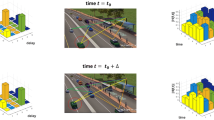We consider the problem of parallel data transmission via several spatial channels in modern high-throughput cellular systems employing the OFDM (Orthogonal Frequency Division Multiplexing) and antenna arrays at both ends of the communication system. Parallel data transmission in such MIMO (Multiple Input Multiple Output) systems is achieved by using the beamforming schemes in the transmitter and the special methods of the spatial-channel division in the receiver. Interference immunity of the scheme of the spatial-channel division by the maximum-likelihood criterion using the method of successive interference cancellation is analyzed. Probability of implementation of the stage of successive interference cancellation for the case of two spatial channels and various combinations of the coding schemes and modulations is obtained. We analyze the efficiency of a cellular communication system using horizontal coding and successive interference cancellation. Practical recommendations on choosing modulation and the code speed for each spatial channel, which ensure maximum interference immunity of a receiver with successive interference cancellation, are made.
Similar content being viewed by others
References
IEEE Std. 802.16e-2005. USA, 2005. P. 840.
3GPP TS 36.211. Evolved universal terrestrial radio access (E-UTRA); LTE physical layer — general description: Release 9. 2009. P. 81.
IEEE Std. 802.16m-D8. USA, 2010. P. 1 014.
A. A. Mal’tsev, A. E. Rubtsov, and A. V. Davydov, Vestnik NNGU. Ser. Radiofizika, 1 (3), 93 (2005).
A. V. Davydov, A. E. Rubtsov, A. A. Mal’tsev, et al., Prikl. Radioelektron. Khar’kov, No. 3, 326 (2006).
P. Wolniansky, G. Foschini, G. Golden, and R. Valenzuela, Signals, Systems, and Electronics, No. 11, 295 (1998).
J. Ketonen, M. Juntti, and J. R. Cavallaro, IEEE Trans. Signal Proces., No. 6, 360 (2010).
C. N. Manchón, L. Deneire, P. Mogensen, and T. B. Sørensen, Vehicular Technology Conf., (2008).
H. Lee, B. Lee, and I. Lee, IEEE J. Selected Areas Commun., No. 3, 504 (2006).
D. Wubben and K.-D. Kammeyer, Vehicular Technology Conf., 457 (2006).
A. Zelst, IEEE Int. Conf. Commun., 2832 (2003).
R. Prasad and R. van Nee, OFDM Wireless Multimedia Communications, Artech House, London (2000), p. 275.
A. A. Mal’tsev and A. V. Davydov, Vestnik NNGU. Ser. Radiofizika, 1 (2), 80 (2004).
ITU-R M.2135-1. Guidelines for Evaluation of Radio Interface Technologies for IMT-advanced (2009), p. 70. http://www.itu.int/publ/R-REP-M.2135/en.
Author information
Authors and Affiliations
Corresponding author
Additional information
Translated from Izvestiya Vysshikh Uchebnykh Zavedenii, Radiofizika, Vol. 54, No. 5, pp. 381–390, May 2011.
Rights and permissions
About this article
Cite this article
Davydov, A.V., Mal’tsev, A.A. Analysis of the method of division of spatial channels with successive interference cancellation in modern MIMO-OFDM cellular systems. Radiophys Quantum El 54, 346–353 (2011). https://doi.org/10.1007/s11141-011-9295-3
Received:
Accepted:
Published:
Issue Date:
DOI: https://doi.org/10.1007/s11141-011-9295-3




